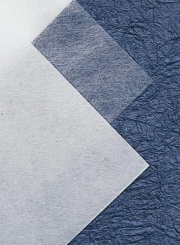Difference between revisions of "Spunbonded fabric"
Jump to navigation
Jump to search
(username removed) |
|||
| (One intermediate revision by one other user not shown) | |||
| Line 6: | Line 6: | ||
== Synonyms and Related Terms == | == Synonyms and Related Terms == | ||
| − | spun-bonded fabric; | + | spun-bonded fabric; |
| − | == | + | Brand names: [[Typar|Typar®]]; [[Tyvek|Tyvek®]]; [[Reemay|Reemay®]] |
| + | |||
| + | ==Resources and Citations== | ||
* Hoechst Celanese Corporation, ''Dictionary of Fiber & Textile Technology'' (older version called Man-made Fiber and Textile Dictionary, 1965), Hoechst Celanese Corporation, Charlotte NC, 1990 | * Hoechst Celanese Corporation, ''Dictionary of Fiber & Textile Technology'' (older version called Man-made Fiber and Textile Dictionary, 1965), Hoechst Celanese Corporation, Charlotte NC, 1990 | ||
Latest revision as of 13:05, 4 June 2022
Description
A nonwoven fabric made with one or more synthetic fibers. The fibers are laid on a continuous bed, then bonded by heat or adhesives. Examples are Reemay® (polyester), Tyvek® (polypropylene) and Typar® (polypropylene).
Synonyms and Related Terms
spun-bonded fabric;
Brand names: Typar®; Tyvek®; Reemay®
Resources and Citations
- Hoechst Celanese Corporation, Dictionary of Fiber & Textile Technology (older version called Man-made Fiber and Textile Dictionary, 1965), Hoechst Celanese Corporation, Charlotte NC, 1990
- Rosalie Rosso King, Textile Identification, Conservation, and Preservation, Noyes Publications, Park Ridge, NJ, 1985
